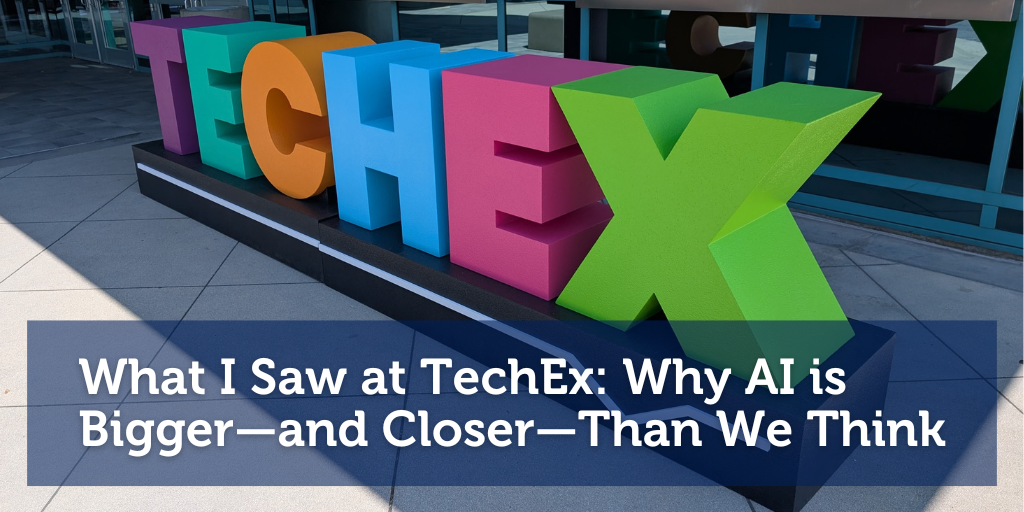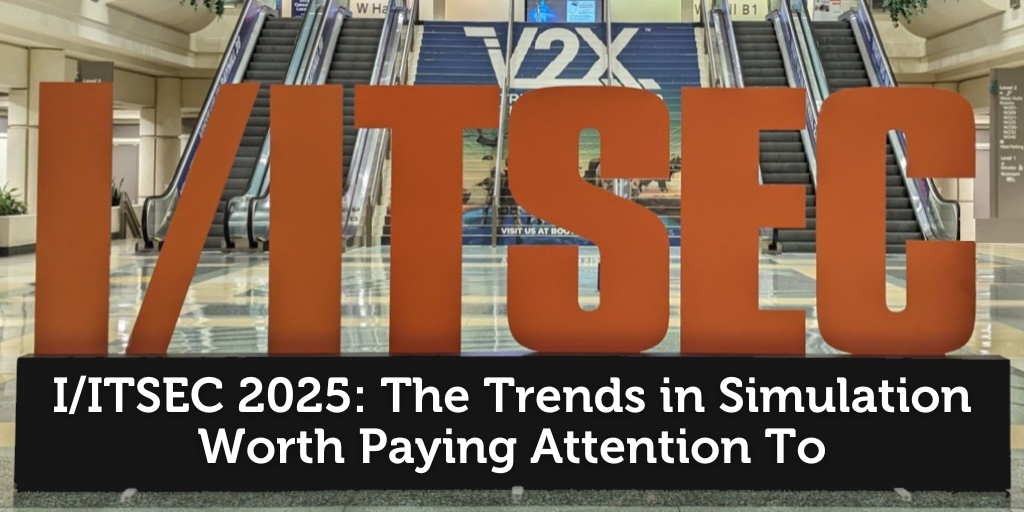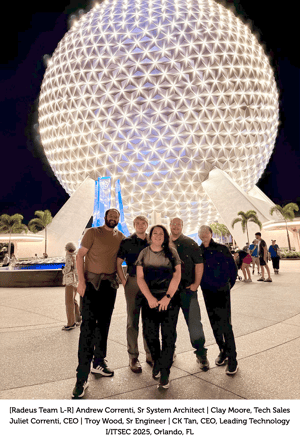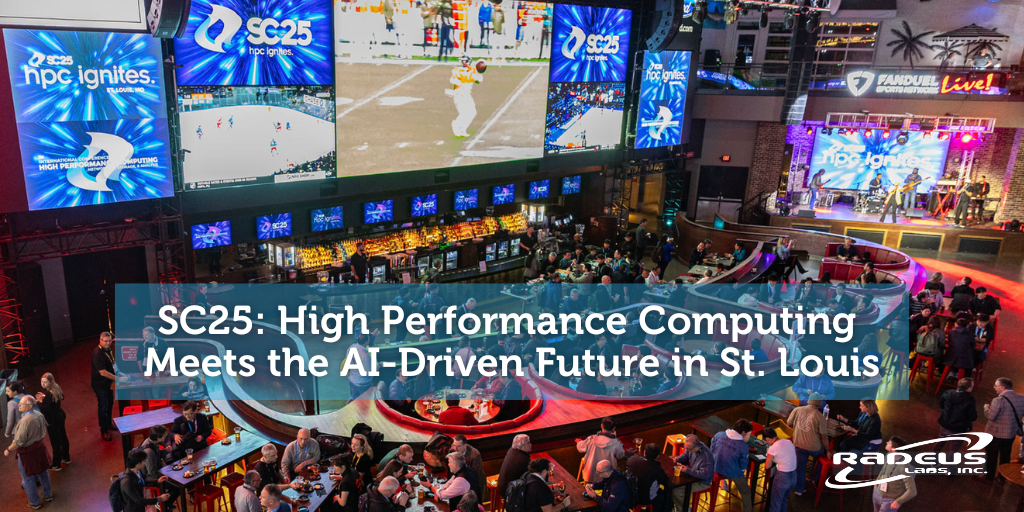 Post by Juliet Correnti, CEO, Radeus Labs:
Post by Juliet Correnti, CEO, Radeus Labs:
Last week I attended TechEx 2025, a conference billed as “seven events in one.” TechEx truly delivered a cross-section of everything AI—from infrastructure to ethics to practical tools for business.
As someone who spends most days thinking about secure systems and simulation hardware, I came home with a bigger takeaway: AI isn’t just for data scientists and Silicon Valley startups. It is set to have massive impacts across industries. The road ahead is exciting, and I’m ready to help turn these tools into real-world impact.
Speech is the New Frontier
 One of the standout themes at the event was voice AI. Not just speech-to-text or smart assistants, but a true merging of natural language models with speech recognition—bridging the gap between how we think and how we talk. Think less Siri, more Star Trek Next Gen's "Computer".
One of the standout themes at the event was voice AI. Not just speech-to-text or smart assistants, but a true merging of natural language models with speech recognition—bridging the gap between how we think and how we talk. Think less Siri, more Star Trek Next Gen's "Computer".
It’s fast. It’s intuitive. And it’s already here—being tested in drive-thrus, deployed in customer service, and embedded in data centers.
But with this progress comes risk. One of the sessions I attended dove into the biases embedded in training data—particularly for voice models. The way we speak, our dialects, educational backgrounds, and even accents can shape how (or if) we’re understood by AI. As business leaders, we’ll need to think about inclusivity and accuracy as much as innovation.
 Agentic AI and the Rise of Autonomous Decisions
Agentic AI and the Rise of Autonomous Decisions
Another term that caught my attention was “agentic AI.” It describes AI that doesn’t just respond—it acts autonomously, makes decisions, and learns continuously. It’s no longer about giving commands; it’s about defining boundaries and letting systems take action.
That shift—toward AI acting like a teammate rather than a tool—has massive implications. It’s what makes voice AI usable. It’s what powers automation in everything from logistics to law. And it’s why trust and control are the next battlegrounds in AI adoption.
Why Security (and Cost) Should Still Be Center Stage
For all the innovation on display, security felt under-discussed. Many cloud-based AI companies at TechEx assumed security was “baked in,” but I couldn’t help asking: Is it? When your models, data, and customer interactions live in the cloud, how are you protecting IP, compliance, and reputational risk?
I spoke with a rep from Deloitte who reinforced a growing trend: on-prem AI isn’t going away. Not just for security reasons, but because of cost. Training and retraining models—especially at enterprise scale—can rack up staggering cloud bills. On-site infrastructure may offer both control and cost-efficiency in ways we haven’t fully valued yet.
A Wake-Up Call for Business Owners
Some of the biggest companies in the world—Visa, TransUnion, Microsoft—shared that they, too, are still figuring this out. Despite their resources, their AI use cases remain early-stage. And yet, the message was clear: businesses that empower employees to experiment with AI tools, run internal hackathons, and continuously retrain will be the ones that move ahead.
One quote from the show stuck with me:
“In the future, work will be humans teaching AI to take their jobs—once they see their valued role in the total workforce ecosystem. Not before.”
This doesn’t have to be scary. If your business values lean processes, like we do at Radeus, and if you’re constantly trying to drive out waste and increase impact—AI is a natural fit. It's not about replacing people; it's about redeploying talent to higher-value work.
We’re Headed to Vegas Next! Meet Our Team at the AIAA Aviation Forum, July 21–25
 If you’re serious about where aerospace, defense, and next-generation computing intersect, you should consider attending the AIAA Aviation Forum in Las Vegas this July.
If you’re serious about where aerospace, defense, and next-generation computing intersect, you should consider attending the AIAA Aviation Forum in Las Vegas this July.
It’s the largest event for aviation research, development, and technology, bringing together:
- Top aerospace leaders, engineers, and innovators from government, academia, and industry
- Discussions on everything from advanced air mobility to digital engineering and AI integration
- Insights into emerging trends around autonomy, cybersecurity, sustainable aviation, and defense readiness
- Hundreds of technical sessions for anyone building, securing, or optimizing aviation systems
We'll be there at Booth 723, showcasing Radeus Labs’ digital flight recorders (DFRs), AI-ready servers, and secure peripherals for simulation and training environments. If you're involved in mission-critical computing or defense tech, stop by—or you can make an appointment to meet us there.
We'd love to talk shop—and swap ideas about where AI is headed next. We’re not just watching the future of AI and aviation. We’re building it!






